1-3 September
Western Front, France/Belgium
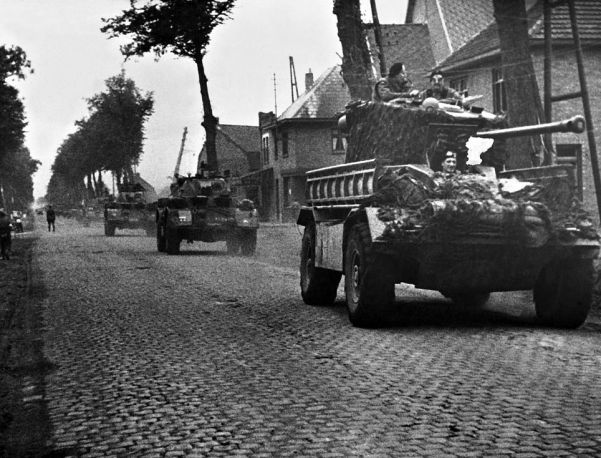
The British Guards and 11th Armored Divisions, both part of the British XXX Corps, reach Arras and Aubigny. The Canadian II Corps, part of the Canadian First Army, liberates Dieppe.
On the 2nd, XXX Corps is instructed to slow its advance and await a projected paratroop drop. With the cancellation of the drop, the advance resumes again. The 32nd and 5th Brigades of the Guards Armored Division begin a race for Brussels, which is won by the 32nd Brigade on the 3rd. On the same day, the British XII Corps is bogged down in fighting around the town of Béthune.
2 September
Politics, Finland
Finland accepts the preliminary conditions for a peace treaty with the Soviet Union and breaks off diplomatic relations with Germany. The Soviet Union then agrees to an armistice.
Eastern Front, Bulgaria
The Red Army reaches the Bulgarian border.
3 September
Western Front, France/Belgium
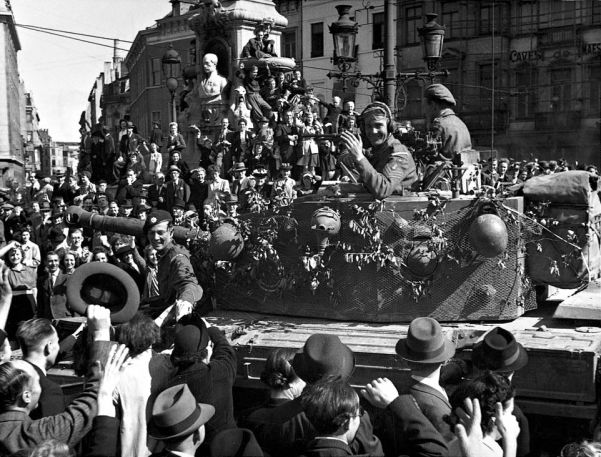
The US First Army takes Tournai and three German corps are crushed. The British Second Army liberates Brussels.
4 September
Western Front, Belgium
The British Second Army liberates the port of Antwerp.
Italy, Adriatic Sector
The British Eighth Army fails to breach the Gemmano-Coriano Ridge on the Gothic Line. The ridge is the pivot point of the German Tenth Army’s second line of defense, and as such it is strongly held, particularly by antitank weapons. An attack by the British 2nd Armored Brigade, for example, is defeated easily, with the British losing over half their tanks.
5 September
Western Front, France
US Third Army spearheads cross the Meuse River. General Karl von Rundstedt is made Commander-in-Chief West by Hitler with orders to counterattack the Allies and split their armies apart. However, his resources for such an undertaking are scant.
Eastern Front, Bulgaria
After declaring war on the country, Red Army units invade rapidly and reach Turnu Severin. The Soviet Union’s leadership is planning to occupy the entire Balkans.
8 September
Politics, Bulgaria
Bulgaria declares war on Germany.
Air War, Manchuria
China-based B-29 Superfortress bombers make their first daylight raid against Japanese industrial targets at Anshan.
8-13 September
Western Front, Belgium/Holland
The British 50th Division crosses the Albert Canal at Gheel. On the 10th, the British Guards Armored Division advances to De Groot.
Three days later, the British 15th Division crosses the Meuse-Escaut Canal.
8-25 September
Eastern Front, Slovakia
The Soviet 1st and 4th Ukrainian Fronts begin their attacks on the Dukla Pass, the key to the Carpathian Mountain barrier separating the Red Army from Eastern Slovakia. It will take the Soviets until the end of November to clear the Carpathians.
10-14 September
Eastern Front, Poland
Despite Stalin’s refusal to aid the hardpressed Warsaw insurgents, units of Marshal Konstantin Rokossovsky’s 1st Belorussian Front attack Praga, the east bank quarter of the city. Fighting is savage, and it is not until the 14th that the area is freed from German control.
15 September
Eastern Front, Poland
Units of the Soviet-raised First Polish Army cross the Vistula River and seize bridgeheads in Warsaw.
Air War, Norway
Lancasters from 9 and 617 Squadrons of the RAF attack Germany’s only remaining battleship - the Tirpitz - in Altenfiord. However, little damage is done, chiefly due to the effectiveness of the German smokescreens.
17 September
Western Front, Holland
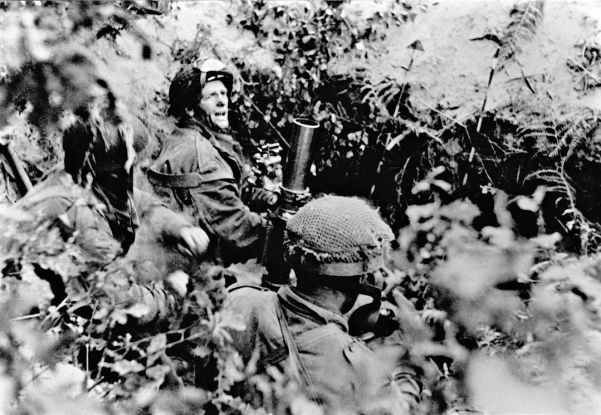
Operation Market Garden, General Bernard Montgomery’s plan for an armored and airborne thrust across Holland to outflank the German defenses, begins. The British 1st Airborne Division lands near Arnhem, the US 101st Airborne Division near Eindhoven, the US 82nd Airborne Division near Grave and Nijmegen, while the British XXX Corps advances from the Dutch border. The 82nd lands without difficulty and takes the Maas and Maas-Waal Canal bridges, but then encounters heavy resistance at Nijmegen. The 101st Division also takes its bridges, but the British paratroopers discover their way to Arnhem is blocked by German units. Only one battalion, under Lieutenant Colonel John Frost, manages to reach the bridge, where it is quickly cut off.
19-21 September
Western Front, Holland
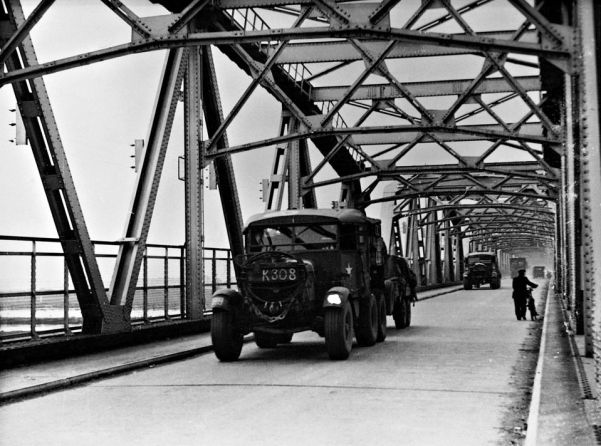
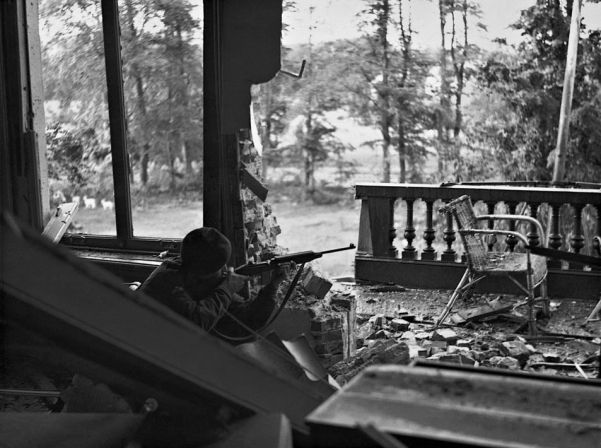
Forward elements of the British XXX Corps reach US paratroopers at Eindhoven, but at Arnhem all attempts to break through to the troops fail. On the 20th, the bridge at Nijmegen is captured by a combined force drawn from the US 82nd Airborne Division and the British XXX Corps. The next day, the British troops at Arnhem are overwhelmed. The remainder form a defensive perimeter on the northern bank of the Neder Rijn, around the village of Oosterbeek.
21 September
Politics, Yugoslavia
The partisan chief Marshal Tito meets the Soviet leader Joseph Stalin. They reach agreement on the ‘temporary entry of the Red Army into Yugoslavia.’
Italy, Adriatic Sector
The Eighth Army takes Rimini after a week of heavy fighting. Since the beginning of its offensive against the Gothic Line, it has lost 14,000 men killed, wounded, and missing, plus 200 tanks. The Italian campaign has not lived up to being the ‘soft underbelly of Europe. ‘a more accurate description would be ‘tough old gut.’
22 September
Western Front, France
Boulogne surrenders to the Canadian II Corps; its garrison of 20,000 men is taken into captivity.
22-25 September
Western Front, Holland
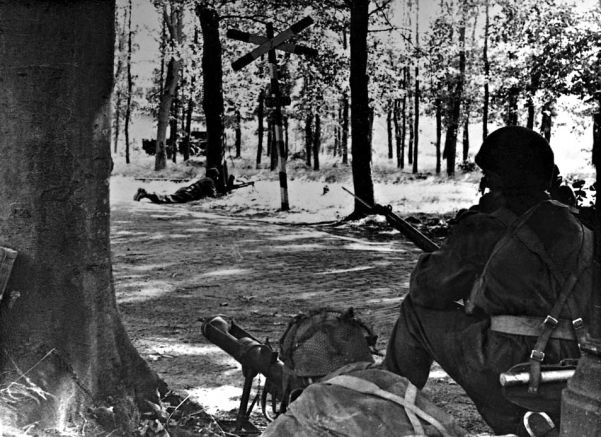
Outside Arnhem, the British XXX Corps’ advance is slowed by German resistance. The Polish Brigade drops south of the Neder Rijn near Driel. On the 23rd, attempts by the Poles and advance troops of XXX Corps to cross the river are driven back, and so the evacuation of the surviving paratroopers begins two days later, leaving 2500 of their dead comrades behind.
23 September
Air War, Germany
The RAF makes a night precision raid on the Dortmund to Ems Canal, the inland waterway that links the Ruhr with other industrial centers. A total of 141 aircraft are involved, the canal is breached, and a section drained. The RAF loses 14 bombers.
23-30 September
Western Front, France
The Canadian 3rd Division invests the port of Calais, which is defended by 7500 men. Following heavy artillery and bomber attacks, and the use of specialized armor, Calais surrenders on the 30th.
